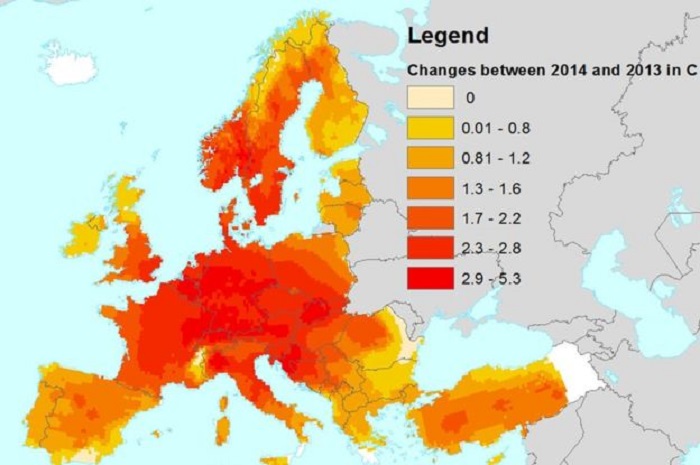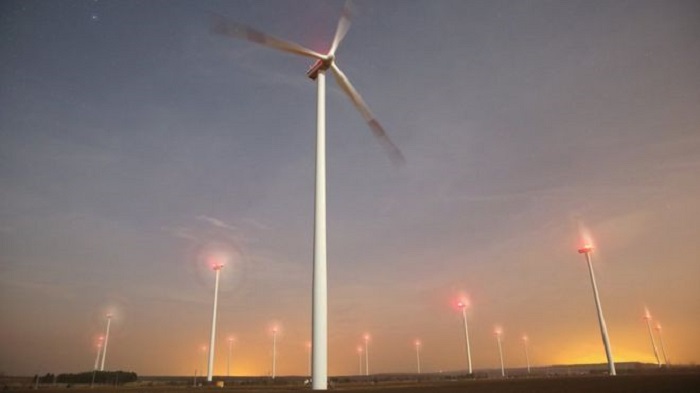A switch from coal to natural gas, the recession and the rise of renewable energy all contributed to the fall.
The latest figures, from 2014, show that a milder winter was the major factor in the reduction that year.
Overall from 1990 to 2014 emissions across the member states of the European Union fell by 24.4%, easily beating the 2020 target of 20% put forward as part of the first international agreement on climate change, the Kyoto Protocol.
Importantly, the EU managed to reduce emissions in this period while economic output rose by 47%.
The keys to cutting warming emissions over the period have been a big switch from coal to gas for electricity production, the rise of renewable energy, better home insulation and the economic recession of 2008.

But milder weather has contributed as well. In 2014, when emissions fell by 4.1%, it was the most important factor.
"If you look at the 24 year period, there is some warming in Europe and this has contributed to lower heat demand and lower greenhouse gas emissions," said Ricardo Fernandez from the European Environment Agency who compiled the figures.
"In the last two years it has even been stronger - in 2014 you can see that, while its not the only factor, by and large it`s due to the milder winter conditions in Europe."
That mild, wet winter was felt particularly in Germany and the UK, and it is reductions in domestic heating demand in both those countries that accounts for just under half the decline across the 28 states that year.
Overall though, over the past 24 years the UK and Germany have both been major movers in helping to reduce greenhouse gases - in that time UK emissions have dropped by more than a third, by 34.3%.
"In Germany after re-unification there was a lot of energy efficiency improvements such as the shutting down of inefficient power plants," said Ricardo Fernandez.
"In the UK there was a liberalisation of electricity production and that lead to much more gas, but beyond what happened in the 1990s both countries have continued to reduce emissions significantly."
But despite the gains, there are some areas where progress is not being made as quickly. The use of hydrofluorocarbon gases, primarily in air conditioning and refrigerators, has increased.
Emissions from road transport have grown by 124 million tonnes between 1990 and 2014, now accounting for around 20% of all emissions in 2014.
While the recession of 2008 reduced the amount of CO2 coming from this sector, the last couple of years have seen significant rises, particularly in road freight.
This difficult area will likely feature in discussions at the EU Commission over the coming months to decide how much each country will cut its carbon under the Paris Climate Agreement.
The EU has agreed that it will cut overall emissions to 40% below the 1990 level by 2030 but it will probably be the end of this year before the 28 members can agree on how much each state will contribute.
Despite the rapid progress on the 2020 target, getting to the 2030 benchmark will require more effort all round.
"For 2030, there has to be more, it`s not just sufficient with the current trends we have," said Ricardo Fernandez.
"At the moment the target for 2020 it is clear but for 2030 we have to step up a little bit."
More about:
















































